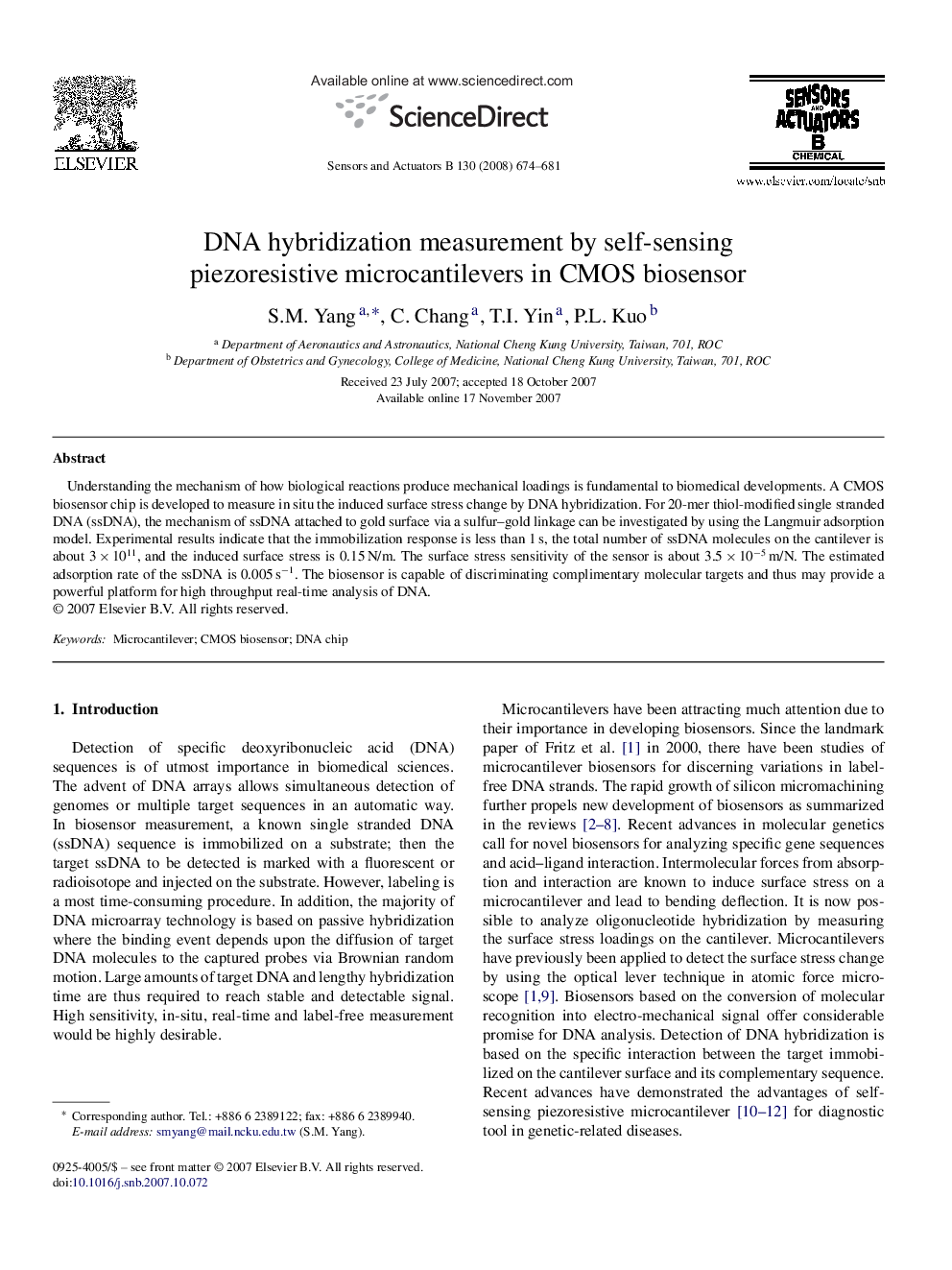| Article ID | Journal | Published Year | Pages | File Type |
|---|---|---|---|---|
| 744058 | Sensors and Actuators B: Chemical | 2008 | 8 Pages |
Understanding the mechanism of how biological reactions produce mechanical loadings is fundamental to biomedical developments. A CMOS biosensor chip is developed to measure in situ the induced surface stress change by DNA hybridization. For 20-mer thiol-modified single stranded DNA (ssDNA), the mechanism of ssDNA attached to gold surface via a sulfur–gold linkage can be investigated by using the Langmuir adsorption model. Experimental results indicate that the immobilization response is less than 1 s, the total number of ssDNA molecules on the cantilever is about 3 × 1011, and the induced surface stress is 0.15 N/m. The surface stress sensitivity of the sensor is about 3.5 × 10−5 m/N. The estimated adsorption rate of the ssDNA is 0.005 s−1. The biosensor is capable of discriminating complimentary molecular targets and thus may provide a powerful platform for high throughput real-time analysis of DNA.
